 Xiaomi 12X Smartphone (Hardware)
Xiaomi 12X Smartphone (Hardware)
Official GBAtemp Review
Product Information:
- Official Store: https://www.mi.com/
Ah, the humble smartphone; far from a necessity, and yet not having one in this day and age almost seems like a crippling experience. Sure, compared to your standard cell phone, or even landline phone, most of these devices offer more in terms of luxury and convenience than actual necessary functions. And yet, it seems as though just about everybody these days has one, to the point where they sometimes feel like they are becoming that necessity. With all of that in mind, if you do find yourself in the market for a new smartphone, it’s important to find the right one for you, and to equip yourself with all of the tools necessary to get everything you need out of it. Enter the topic of today’s review, the Xiaomi 12X smartphone. Xiaomi phones are no stranger to the GBAtemp reviews section, with my colleague KiiWii having relatively recently reviewed the brand’s 11T model smartphone. How does this latest model hold up against the competition? Let’s dive right in.
Tech Specs
- Model: Xiaomi 12X
- Body Dimensions 152.7 x 69.9 x 8.2 mm (6.01 x 2.75 x 0.32 in)
- Weight 176 g (6.21 oz)
- SIM Dual SIM (Nano-SIM, dual stand-by)
- Display Size 6.28 inches, 95.2 cm2 (~89.2% screen-to-body ratio)
- Resolution 1080 x 2400 pixels, 20:9 ratio (~419 ppi density)
- Material: Corning Gorilla Glass Victus
- OS Android 11, MIUI 13
- Chipset Qualcomm SM8250-AC Snapdragon 870 5G (7 nm)
- CPU Octa-core (1x3.2 GHz Kryo 585 & 3x2.42 GHz Kryo 585 & 4x1.80 GHz Kryo 585)
- GPU Adreno 650
- Internal Memory: 128 GB 8 GB RAM, or 256 GB 8 GB RAM
- Camera: 50 MP, f/1.9, 26mm (wide), 1/1.56", 1.0µm, PDAF, OIS
13 MP, f/2.4, 12mm, 123˚ (ultrawide), 1/3.06", 1.12µm
5 MP, 50mm (telephoto macro), AF- Video: 8K@24fps, 4K@30/60fps, 1080p@30/120/240/960fps, gyro-EIS
- Battery Type Li-Po 4500 mAh, non-removable
- Charging Fast charging 67W, 100% in 39 min (advertised)
- Colors: Black, Blue, Pink
- Price: Starting at $649 USD
Out of the box, I was already a fan of the phone upon first glance. I’ve talked in the past about how much of a fan I am of sleek, minimalist designs, and the packaging for the 12X hits all of those notes I like, and then some. Front and center is the phone itself, with a satisfyingly peelable front label informing some basic specs right away. Beyond that, all that’s included is the USB-A to USB-C cable, a USB-A charging brick, which I’m unfortunately unable to use as it seems I was provided with a European style plug on the brick, a standard SIM eject tool, and a clear rubber phone case that simply slides onto the back of the 12X. This case is one of my favorite inclusions, providing a sleek and comfortable grip-aid to the device, as well as a bit of protection without obstructing the volume or power buttons or distracting from the design of the phone itself. For review, Xiaomi sent me the blue colored model, which I’m able to admire through the case without distraction, and in fact often forgetting that I have a case on it at all. On the other side, the corning gorilla glass OLED display offers a crystal clear, sturdy screen that has me less worried about accidental knicks or cracks than my daily-use iPhone 12 Pro.
Jumping into using the actual phone, the battery life stuck out to me as I got everything set up to my liking. The 12X comes packed with a 4500 mAh Li-Po battery, that can charge to 100% in as little as 40 minutes or so when using a charger offering 67W. As I was setting up my phone and beginning initial tests, and as I’ve continued to use it throughout the writing of this review, the battery life continued to impress by maintaining steady levels of charge, standing up to a whole day of casual use and only dropping to about 50% by the end of it. Battery performance during emulation impressed, too, managing to hold up well enough after longer sessions of gaming. As with all new phones, the Xiaomi 12X comes with a variety of apps pre-installed for convenience of use; running primarily with Google apps, just about everything I already use daily came pre-installed from the get go; Google Chrome, Gmail, Google Calendar, YouTube, Google Drive, etc. The Google Play app store is even the primary storefront on the phone, allowing the variety of apps available there to be easily downloaded and utilized. Other “standard” apps, such as Facebook, Spotify, and Amazon, also all come pre-downloaded, but are able to be easily deleted at your convenience. Beneath the hood, the 12X is operating on Xiaomi’s latest OS, MIUI 13, in conjunction with Android version 11. MIUI 13 right out of the box allows one to take advantage of Xiaomi’s computing and memory optimization updates right away, allocating resources to where you’re using them the most, and truly customizing the user experience for each individual. In terms of actually using the phone, there really isn’t a ton more to talk about; calls come in clear as day, the user interface is simple, easy to use, and even easier to customize. The actual usage of the device is incredibly satisfying, with the phone's haptic feedback responding quickly to nearly every tap. A satisfying user experience for sure, which I feel is an important aspect of every phone.
Upon finishing the setup, the first thing I did was run to the Google Play store and download Geekbench 5 to do a proper benchmark test on the device. Using the app, I ran both single-core and multi-core CPU tests, as well as a computing test. At a single-core score of 975, and a multi-core score of 3185, the Xiaomi 12X sits just slightly at the top of Geekbench’s comparison charts, just barely edging out the Samsung Galaxy S21 Ultra’s scores of 924 single-core and 3085 multi-core. With that, I’m comfortable calling this phone at minimum, equal to the Galaxy S21 Ultra’s offering… in terms of CPU core performance, at least. The GPU computing test, meanwhile, put the 12X at a 3675 Vulcan score, and a 3603 OpenCL score. While Geekbench didn’t give me performance comparisons for the Vulcan benchmark, the OpenCL score was significantly below the Samsung Galaxy S21’s various offerings, each one scoring from the mid 6000s to nearly 7000. So an underperforming GPU to say the least, but with plenty of core power beneath the hood. With all of that in mind, for the average difference in price between these two phones, with the 12X averaging a cost of $650? I find it impressive that the 12X can push its performance this far at all, and it’s still a plenty powerful machine for my uses.
One of the things I was most excited for with the 12X was to test out its emulation performance, coming from the realm of an un-jailbroken iPhone. For testing, I did a mix of using on-screen touch controllers, as well as bluetooth pairing an Xbox controller, and noticed significant performance improvements across the board when utilizing the controller. Jumping in with Dolphin, I got nearly flawless gameplay from Pokémon Colosseum, Luigi’s Mansion, and Harvest Moon: A Wonderful Life. None of these taxed the hardware all that much, from what I could tell, and all ran at a smooth 30 FPS in their native framerates. Metroid Prime and F-Zero GX, on the other hand, gave me some issues. Metroid was alright, with a few stutters but nothing crazy, up until the first boss. From there, I dealt with a ton of lag and graphical stuttering, though admittedly no crashes. It was on the cusp of “playable,” but I could foresee more issues like this in later levels. F-Zero, meanwhile, lagged and stuttered from the very first screen, with things only approaching even close to playable when my vehicle was the only one on screen during a race. The second I caught up to the rest of the race, things completely grinded to a halt yet again. Much like Metroid, F-Zero caused no actual crashing, but it was absolutely far from playable.
On the Wii end of Dolphin’s capabilities, I did most of my testing with The Legend of Zelda: Twilight Princess, Super Smash Bros. Brawl, Donkey Kong Country Returns, and New Super Mario Bros. Twilight Princess ran fine for the most part, but would stutter for the most random reasons, and crashed on me more than once. Brawl, meanwhile, offered a choppy at best experience for the five minutes of pre-crash gameplay I was able to get each time I tried playing it. New Super Mario Bros and Donkey Kong Country Returns, meanwhile, hardly taxed the system at all and ran relatively as expected, with my only real complaint being the gimmicky motion controls both games still required, an issue that’s of no fault to the phone or Dolphin. So in total regarding the phone’s ability to emulate through Dolphin, you mostly get a mixed bag. Simpler Wii games seem to work just fine, and the majority of everything I tested on the GameCube worked almost flawlessly. Not perfect, but a solid device for GameCube emulation at least.
One of the tests I looked forward to most was seeing if the AetherSX2 PlayStation 2 emulator for Android was capable of running on the phone. Getting everything set up, I tested the emulator with games such as God of War, Dragon Quest VIII, Resident Evil 4, and TimeSplitters 2. For the most part, the AetherSX2 emulator ran shockingly well on the 12X, with just about everything running perfectly fine at native resolution, hovering around the 60 FPS mark consistently, and rarely dropping much further than that. Upon initial setup, I did have some framedrop and stuttering issues with God of War, but those issues were nowhere to be found on subsequent boots of the title. With this, TimeSplitters 2 was easily the problem child. Environmental effects and getting shot at caused severe frame drops, lagged the entire thing down, and just overall was far from what I’d call a playable experience. Though the app never once crashed, to its credit. And when looking at the emulator performance overall, I’m more than impressed. The 12X’s screen size even made playing with the emulator’s touch controls work fine enough, all things considered. Aether is still, of course, in alpha and the performance on the 12X definitely wasn’t perfect. But it was absolutely to playable standards, and getting that on a phone with a PS2 emulator at all is enough cause for celebration in my mind.
Being a professional photographer and videographer, I was of course drawn to check out and test the 12X’s built in camera. I’m of the opinion that smartphone cameras, while not quite to the level of a really good DSLR, are perfectly capable photography and video machines that shouldn’t be overlooked in the right hands. The 12X, in this case, offers three different lenses for its camera, a 50 megapixel (MP) wide angle f/1.9 lens, a 13 MP f/2.4 ultrawide lens, and a 5 MP 50mm telephoto macro lens for those sweet close ups. In terms of still photography, the 12X’s camera can be as basic or as complex to shoot with as you’d like; the standard “point and shoot” features are there, in addition to a panorama camera, portrait mode, video and slow motion video modes, 50 MP Ultra HD shooting, as well as a Pro mode that lets you take finer control of your shutter speed (from 1/4000 to 30), ISO (from 50 to 6400), exposure value, focus, and even white balance to an extent (unfortunately there’s no direct temperature control). None of these options are particularly deep, and most underperform compared to a proper DSLR, but I love having the options to fine tune beyond the simple point-and-shoot options that other smartphone cameras have. In terms of photography, you can get as much or as little out of the 12X as you want. When comparing your standard point-and-click options, I noticed the 12X was just about on par with my iPhone 12 Pro. When using the 50MP UltraHD option, I noticed that photos came out significantly more vivid and detailed than my iPhone's directly from the camera, though not anything that some photo editing wouldn't be able to do on the backend. Utilizing the macro lens and Pro mode, I was able to get other shots much easier on the 12X than I would've been able to get with the iPhone. Tighter shots also looked just a bit more detailed and vivid through the Macro lens, than through the iPhone's zoom. Overall, in terms of still photography, I really like the tools that the 12X makes available to you, and the quality of photos you're able to get without any editing
Photos taken directly from 12X camera with no editing. Simple point-and-click comparison. iPhone 12 Pro (Left), Xiaomi 12X (Right) iPhone 12 Pro zoom (Left), Xiaomi 12X macro lens shot(Right)Your video options are locked primarily into choosing your resolution and framerate, with some framerates locked to specific resolutions; 30 FPS at 720p, 30 and 60 FPS at 1080p and 4K, and 24 FPS at AI upscaled 8K. Super simple, super basic, but it’s there and it works. The different quality options all perform just fine in the recording, though I did notice that the AI 8K footage seemed particularly choppy and stuttery as I was recording. Taking a couple of test videos and importing them into Adobe Premiere Pro, I was able to get a better look at how the videos perform in practice. The 4K camera didn’t really bring anything new to the table, but it still offered a smooth, steady shot with great and vibrant colors directly out of the camera. Though I’m unable to give a proper test to the AI upscaled 8K, as I’m without an 8K capable monitor, I was still able to check it out a bit. The AI upscaling is, unfortunately, very clear, and all of the 8K footage looks noisy and grainy by comparison to the 4K video, making the upscaling immediately obvious. Cropping in the video on a 4K timeline certainly offered, as expected, a much clearer tight shot than the 4K footage with minimal quality loss, but the 8K video being locked to 24 FPS while other footage is locked in at 30 FPS or higher, makes mixing and matching this with other footage from the same phone less than ideal. That said, the 8K video still looked good, and had the same vibrant colors I like from the 4K. It’d be nice to have finer control over the video just like you do with the photos, and in fact I think that these features would be put to much better use with video in some instances. But this is far from a dealbreaker. All told, I’m a fan of the camera this phone offers; the Pro features, while limited, are very welcome, and I’m a fan of being able to limit the editing needed from the phone photos. That said, the inability to change my f-stop without switching my lens is a bit of a bummer, and I wish that some of those pro features were available in video recording. But that doesn’t change the fact that the photo quality is there, and it’s high. Now am I going to be shelving my Sony A7SIII in favor of taking this phone to a job? Absolutely not. But it’s still a fine photography device, even if the video features leave a bit to be desired.
In all, I’m very impressed with the Xiaomi 12X. It’s a powerful enough machine, offering just about everything I was hoping for from my first ever foray into the smartphone reviewing game. A high quality camera, solid emulation performance, and excellent battery life stick out as highlights of the device. Now, will it be replacing my iPhone 12 Pro as my daily driver? That remains to be seen. Despite how much I like about the 12X, there’s just as much that I still like about my iPhone. If it doesn’t become my everyday use phone, know only that the decision comes from me being too stuck in my ways as an Apple shill, and not through any fault of this fantastic phone.
Verdict
- Powerful CPU for the price
- Good emulation performance
- Solid photo camera
- Sleek, minimalist design
- Mid range GPU
- Less fine tuning options for video recording



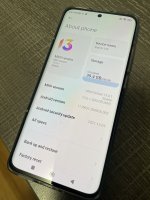
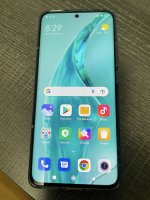


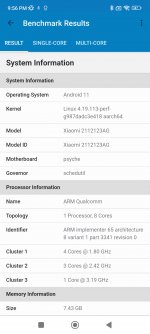

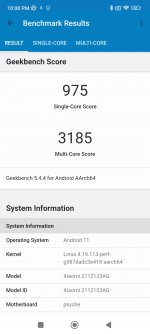
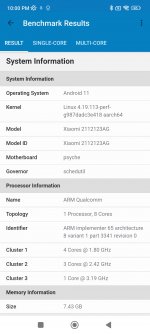
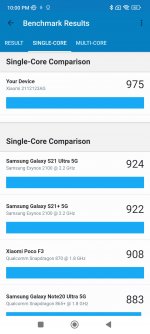
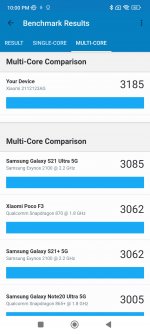
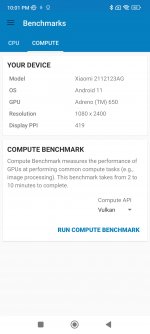
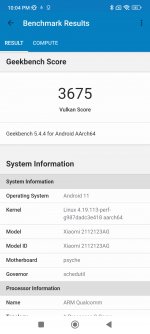
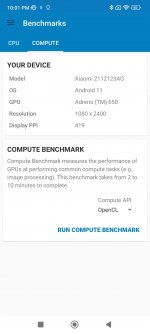
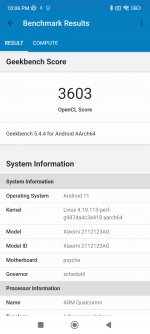
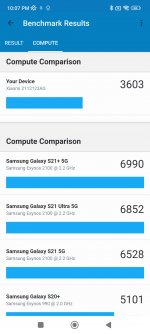
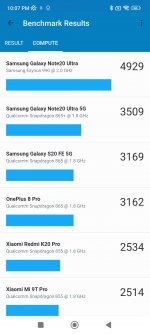

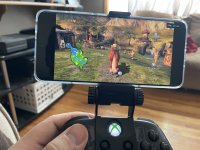

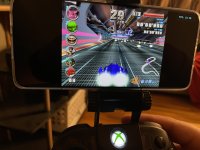



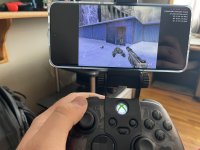
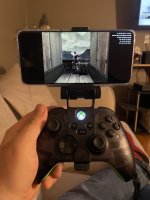





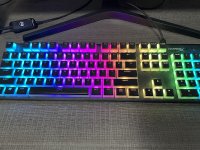
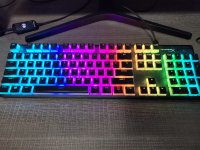


Options
View top chatters